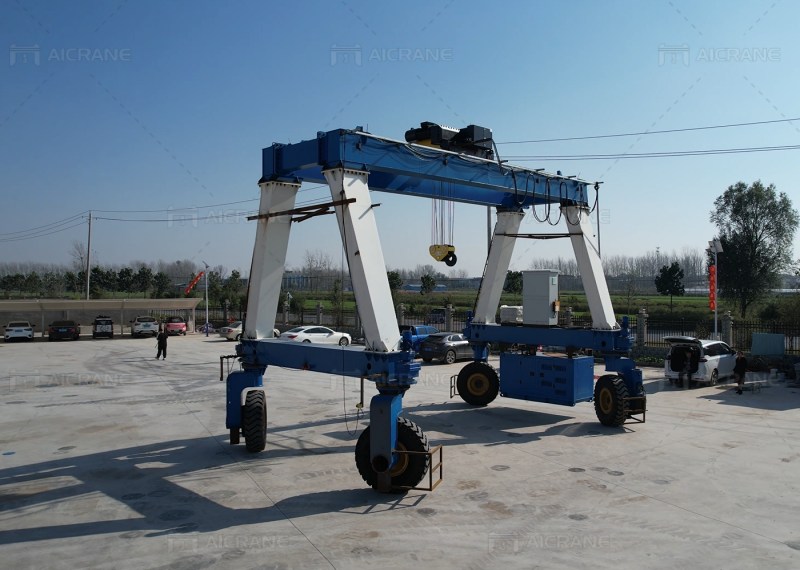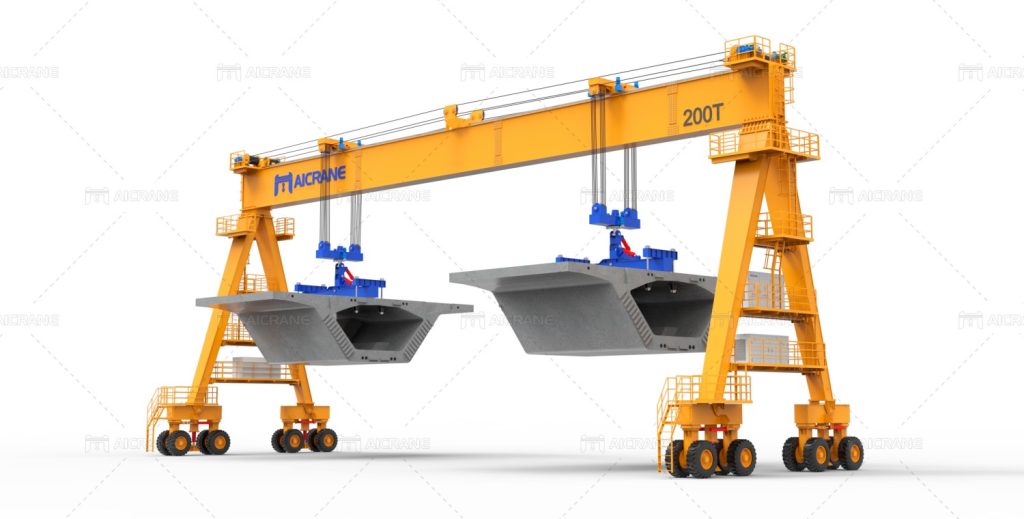Rubber tyred gantry (RTG) cranes, also known as tyre mounted gantry cranes (TMGCs), are essential equipment in container handling operations at ports and terminals. These cranes are equipped with advanced control systems and operator interfaces to ensure precise and efficient operation. In this article, we will explore the control systems and operator interfaces used in tyre mounted gantry cranes, highlighting their functionalities, features, and importance in container handling.
Control Systems Overview
The control systems of tyre mounted gantry cranes are designed to manage and coordinate various crane functions, including lifting, lowering, trolley movement, gantry travel, and spreader operation. These systems integrate advanced technologies to optimize performance, enhance safety, and improve productivity in container terminals.

Components of Control Systems
PLC (Programmable Logic Controller):
PLCs form the backbone of the control system, executing control algorithms and coordinating inputs and outputs.
They monitor crane operations in real-time and ensure accurate execution of commands.
Drives and Motors:
Electric drives and motors control the movement of different crane components, such as the hoist, trolley, gantry, and wheels.
Variable frequency drives (VFDs) enable smooth acceleration, deceleration, and speed control.
Sensors and Feedback Devices:
Various sensors, including encoders, limit switches, load cells, and proximity sensors, provide critical feedback to the control system.
They monitor parameters such as position, speed, load, and safety limits, ensuring precise and safe crane operation.
Safety Systems:
Control systems incorporate comprehensive safety features to protect personnel, equipment, and cargo.
Emergency stop buttons, collision avoidance systems, and overload protection ensure safe working conditions.
Operator Interfaces
Operator interfaces in tyre mounted gantry cranes provide crane operators with intuitive control and monitoring capabilities. These interfaces are designed to facilitate efficient operation and decision-making during container handling tasks.
Key Features of Operator Interfaces
Control Consoles:
Operator cabins are equipped with ergonomic control consoles that house joysticks, buttons, and touchscreens.
Operators use these interfaces to command crane movements, adjust parameters, and monitor performance.
Visualization Systems:
Large displays or monitors present real-time data, including crane status, load information, and operational conditions.
Visualization systems enhance situational awareness and assist operators in making informed decisions.
Diagnostic Tools:
Operator interfaces provide access to diagnostic tools and maintenance interfaces.
Operators can troubleshoot issues, perform system checks, and review historical data for maintenance purposes.
Remote Control and Automation:
Advanced tyre mounted gantry cranes support remote control and semi-autonomous operation.
Remote interfaces enable operators to control cranes from a safe distance, improving efficiency and flexibility.

Importance of Advanced Control Systems
The integration of sophisticated control systems and operator interfaces offers several benefits in tyre mounted gantry cranes:
- Enhanced Efficiency: Precise control and automation optimize crane movements, reducing cycle times and improving productivity.
- Improved Safety: Comprehensive safety features minimize risks and ensure compliance with safety regulations.
- Ease of Operation: Intuitive interfaces empower operators to efficiently manage complex operations and respond to changing conditions.
- Maintenance Optimization: Diagnostic tools and data logging facilitate proactive maintenance, minimizing downtime and extending crane lifespan.
Future Trends and Innovations
The evolution of tyre mounted gantry crane control systems continues with advancements in technology:
- Integration with AI and Machine Learning: Predictive analytics and machine learning algorithms optimize crane performance and maintenance scheduling.
- IoT Connectivity: Real-time data exchange through the Internet of Things (IoT) enables remote monitoring, predictive maintenance, and fleet management.
- Autonomous Operation: Fully autonomous tyre mounted gantry cranes are on the horizon, promising increased efficiency and operational flexibility.
In conclusion, control systems and operator interfaces play a pivotal role in the functionality and performance of tyre mounted gantry cranes. These systems empower operators with advanced tools and capabilities, driving efficiency, safety, and innovation in container handling operations. As technology continues to evolve, tyre mounted gantry cranes are poised to become even more intelligent and autonomous, revolutionizing the landscape of port logistics and container terminal operations. In addition to rubber gantry cranes, there are also rail mounted gantry cranes, which are usually used to transfer heavy loads from one place to another on request.